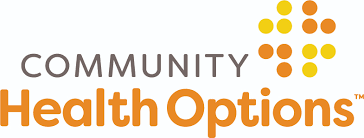Last December, SAMHSA announced it’s working definition of recovery, along with a set of guiding principles. The definition was the result of a lengthy process that involved service providers, recovery advocates, and other stakeholders.
For reference, the original definition looked like this:
Recovery from Mental Disorders and Substance Use Disorders: A process of change through which individuals improve their health and wellness, live a self-directed life, and strive to reach their full potential.
Through the Recovery Support Strategic Initiative, SAMHSA has delineated four major dimensions that support a life in recovery:
- Health: overcoming or managing one’s disease(s) as well as living in a physically and emotionally healthy way;
- Home: a stable and safe place to live;
- Purpose: meaningful daily activities, such as a job, school, volunteerism, family caretaking, or creative endeavors, and the independence, income and resources to participate in society; and
- Community: relationships and social networks that provide support, friendship, love, and hope.
According to their blog, SAMHSA has received enough public input that they have decided to release a new version of the definition. The slightly revised SAMHSA definition of recovery and principles now place more emphasis on abstinence and note that an individual may be in recovery from a substance use disorder, mental disorder, or both.
Here is the slightly updated version:
Recovery from Mental Disorders and/or Substance Use Disorders: A process of change through which individuals improve their health and wellness, live a self-directed life, and strive to reach their full potential.
Through the Recovery Support Strategic Initiative, SAMHSA has delineated four major dimensions that support a life in recovery:
- Health: overcoming or managing one’s disease(s) or symptoms—for example, abstaining from use of alcohol, illicit drugs, and non-prescribed medications if one has an addiction problem—and for everyone in recovery, making informed, healthy choices that support physical and emotional wellbeing.
- Home: a stable and safe place to live;
- Purpose: meaningful daily activities, such as a job, school, volunteerism, family caretaking, or creative endeavors, and the independence, income and resources to participate in society; and
- Community: relationships and social networks that provide support, friendship, love, and hope.
The above are just parts of the working definition. You can read the full document, including the Guiding Principles of Recovery, on SAMSHA’s blog.
Creating a solid definition for recovery is certainly a big task. So many people have had so many different experiences in finding, achieving and maintaining recovery.
What do you think of the updated SAMHSA definition of recovery?
Read more about the updated definition and guiding principles

















